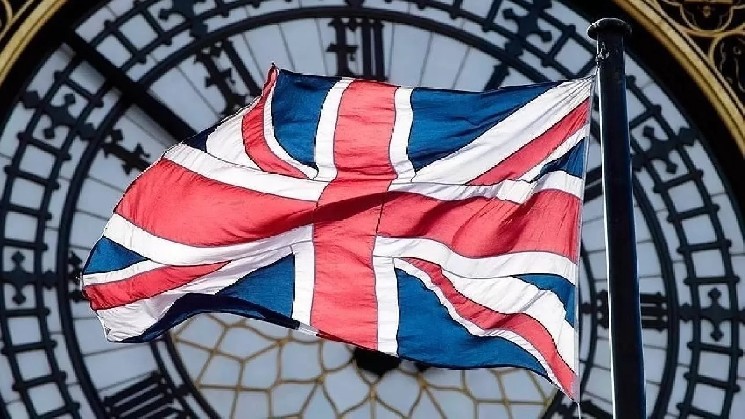Bank of England Proposes Strict £20,000 Cap on Individual Stablecoin Holdings in New Regulatory Framework
UK’s Central Bank Unveils Comprehensive Plan to Regulate Digital Assets Market While Balancing Innovation and Financial Stability
In a significant move that signals the growing mainstream acceptance and regulatory scrutiny of digital currencies, the Bank of England (BoE) has unveiled a detailed proposal to regulate the UK’s burgeoning stablecoin market. The central bank’s plan introduces stringent caps on individual investments while establishing a more permissive framework for corporate holdings. Individual investors would face a maximum holding limit of £20,000, while businesses could maintain stablecoin reserves of up to £10 million under the proposed regulations.
The announcement comes as financial authorities worldwide grapple with the rapid growth of digital assets and the potential risks they pose to conventional financial systems. Stablecoins—cryptocurrencies designed to maintain a stable value by being pegged to traditional assets like the British pound or US dollar—have gained particular attention from regulators due to their potential to serve as everyday payment instruments outside the traditional banking infrastructure.
“This regulatory framework represents a balanced approach to innovation in digital payments while safeguarding the financial system’s integrity,” said a senior BoE official who requested anonymity as the proposal is still under public consultation. “We recognize the potential benefits stablecoins offer, but we must ensure appropriate guardrails are in place to protect consumers and maintain monetary stability.”
Reserve Requirements and Prudential Oversight Form Cornerstone of New Framework
The proposed regulations extend beyond mere holding limits, establishing comprehensive reserve rules that would fundamentally reshape how stablecoin issuers operate in the United Kingdom. Under the new framework, stablecoin providers would first need to pass a rigorous audit conducted by the UK Financial Conduct Authority (FCA) before falling under the Bank of England’s supervisory umbrella—creating a two-tiered regulatory approach.
Particularly notable is the BoE’s requirement that stablecoin issuers may invest a maximum of 95 percent of their reserve assets in short-term government bonds. This provision aims to ensure sufficient liquidity and stability in stablecoin reserves, reducing the risk of a “run” scenario where mass redemptions could potentially destabilize both the stablecoin ecosystem and adjacent financial markets. The remaining 5 percent would presumably need to be held in cash or cash equivalents to handle immediate redemption demands.
Financial analysts suggest this reserve requirement aligns with the BoE’s broader monetary policy objectives. “By directing stablecoin reserves primarily into government bonds, the Bank is ensuring these digital assets don’t become vehicles for excessive risk-taking or financial instability,” explained Dr. Eleanor Harrington, financial technology researcher at Imperial College London. “It’s a conservative approach, but one that recognizes stablecoins’ growing importance in the payments landscape.”
Individual Investor Protections Central to Regulatory Design
The £20,000 cap on individual holdings appears specifically designed to protect retail investors while acknowledging stablecoins’ emerging utility in everyday transactions. This limit significantly exceeds the average Briton’s monthly expenses, suggesting the BoE is not seeking to hamper practical use of stablecoins for regular payments and transfers, but rather to prevent excessive concentration of personal wealth in these relatively new financial instruments.
“The individual cap represents a pragmatic compromise,” noted Jonathan Mercer, cryptocurrency policy analyst at the UK Digital Economy Forum. “It allows sufficient headroom for practical consumer adoption of stablecoin payments while creating a ceiling that limits potential financial damage to any single household should a stablecoin project encounter difficulties.”
The stark contrast between the £20,000 individual limit and the £10 million corporate threshold reflects the BoE’s nuanced understanding of different market participants. Businesses, particularly those operating in the digital economy or conducting international transactions, may legitimately require larger stablecoin reserves to facilitate operations, while individual consumers are more likely to use stablecoins for smaller, more frequent transactions.
Corporate Framework Balances Commercial Needs with Systemic Risk Concerns
The £10 million corporate holding allowance signals the BoE’s recognition that businesses, especially those engaged in international commerce or digital services, may require significant stablecoin reserves for operational purposes. This higher threshold aims to accommodate legitimate business use cases while still maintaining some limits to prevent excessive concentration of corporate wealth in stablecoins.
Industry experts believe this tiered approach demonstrates sophistication in the BoE’s regulatory thinking. “The substantial gap between individual and corporate limits shows the Bank has carefully considered different use cases and risk profiles,” said Victoria Chang, partner at Blockchain Ventures Capital. “Companies conducting high-volume, cross-border transactions might genuinely need access to larger stablecoin reserves than individual consumers.”
The corporate framework could prove particularly beneficial for UK fintech companies and businesses engaged in international trade, potentially reducing transaction costs and settlement times compared to traditional banking channels. However, some industry advocates have already questioned whether even the £10 million limit might prove restrictive for larger enterprises operating globally.
Implementation Timeline and Market Response to Shape Final Regulations
Bank of England officials emphasized that the current proposal represents the beginning of a consultative process rather than finalized regulations. The central bank intends to gather extensive feedback from the public, industry stakeholders, consumer advocates, and other interested parties before finalizing the regulatory framework, suggesting potential modifications based on substantive input.
“We encourage robust participation from all sectors during this consultation period,” the BoE representative stated. “Our goal is to develop a framework that protects consumers and the broader financial system while allowing beneficial innovation to flourish in the UK’s digital asset space.”
Initial market reactions have been mixed, with traditional financial institutions generally welcoming the regulatory clarity while some cryptocurrency advocates express concern about potential innovation constraints. Stablecoin issuers with significant UK market presence, including both global players and UK-based projects, face particularly consequential adjustments to their business models should these regulations be implemented as currently proposed.
Broader Implications for Global Stablecoin Regulation
The Bank of England’s proposal arrives amid a global push toward comprehensive stablecoin regulation, with authorities in the United States, European Union, Japan, and Singapore all developing frameworks to address similar concerns. The UK’s approach, balancing individual protection with commercial flexibility, may influence regulatory thinking in other jurisdictions.
“The BoE’s framework is notable for its specificity and quantitative limits, which contrast with some other regulators’ more principles-based approaches,” explained Professor Harriet Wilson, who specializes in financial regulation at the London School of Economics. “This creates a clear benchmark against which other regulatory regimes may be measured.”
Industry observers note that the UK’s post-Brexit financial regulatory independence allows it to move more nimbly than some larger jurisdictions in establishing stablecoin frameworks. Whether this agility translates into a competitive advantage for the UK’s digital asset ecosystem remains to be seen, but the Bank’s willingness to engage substantively with stablecoin regulation suggests a recognition of these assets’ growing importance in the global financial landscape.
As the consultation period unfolds and the proposal moves through the UK’s legal and regulatory processes, market participants will be watching closely to see whether the final framework maintains the current balance between consumer protection and innovation—and whether the specific thresholds of £20,000 for individuals and £10 million for corporations survive intact. Whatever the outcome, the Bank of England’s proposal represents one of the most detailed regulatory frameworks for stablecoins yet advanced by a major central bank.














